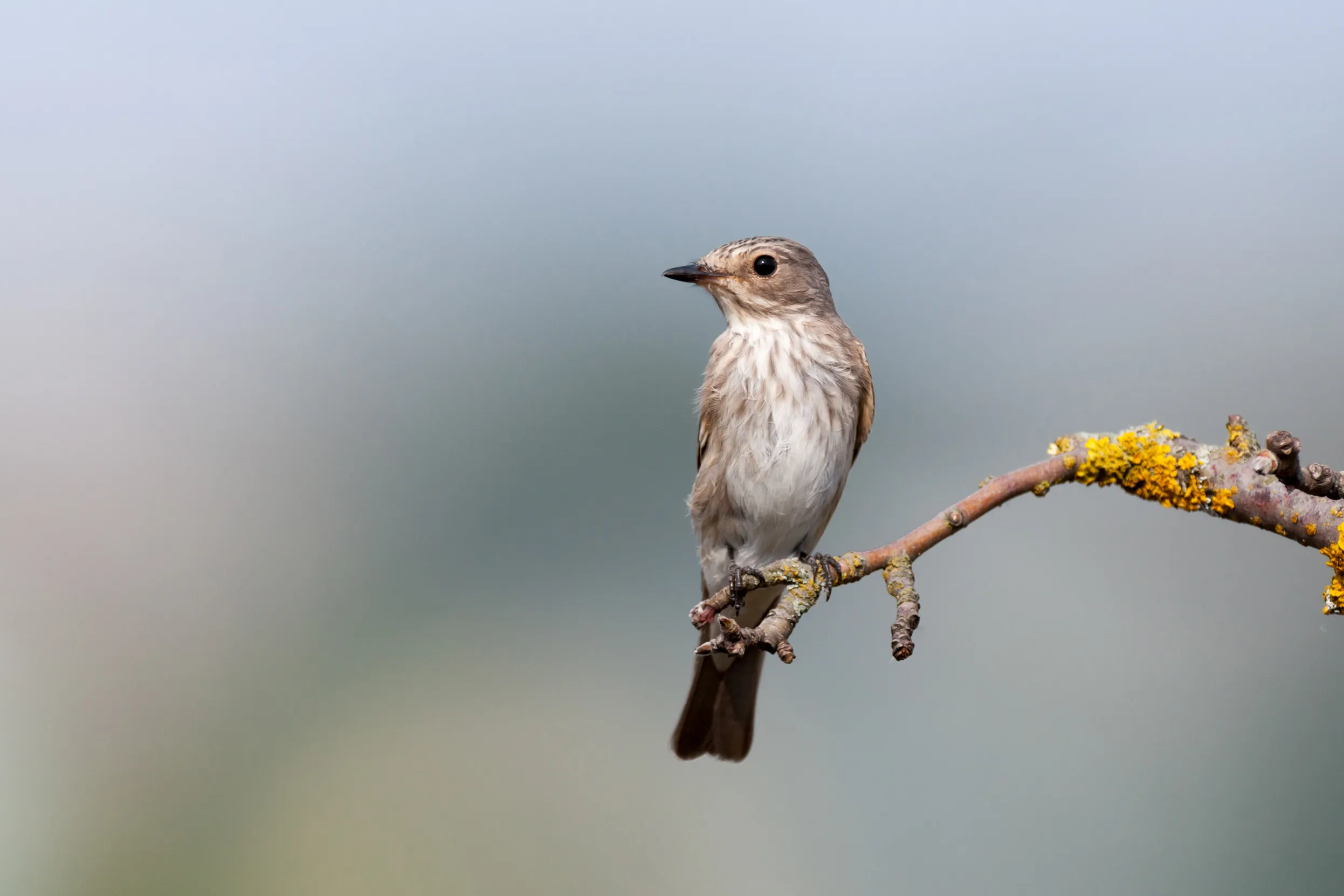.jpg)
Spotted Flycatchers declined by 88% between 1970 and 2018, putting them on the Red List of birds of high conservation concern.

.jpg)
Spotted Flycatchers declined by 88% between 1970 and 2018, putting them on the Red List of birds of high conservation concern.
You’re most likely to see Spotted Flycatchers in woodlands, as well as mature gardens and parks with lots of trees and other vegetation that support the insects they feed on. They will also use mature hedgerows with trees in farmland. Spotted Flycatchers are widespread across much of the UK.

As their name suggests, Spotted Flycatchers are masters at catching flies and other insects, such as butterflies, wasps and craneflies. You might see one sitting on a branch, before darting out to catch an unsuspecting insect as it flies past.
The Spotted Flycatcher’s call is a repetitive, high-pitched ‘tzee, tzee’. Its song is a series of scratchy warbles and higher-pitched notes.
Spotted Flycatchers build their open, cup-shaped nests on ledges in and around buildings and walled gardens, as well as on creepers climbing up walls and trees.

Have you seen a small, brown bird in your garden and you’re not sure what it is? There are lots of potential contenders, so take a look at these ID tips to help you to work out the identity of your mystery bird.